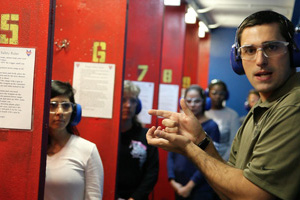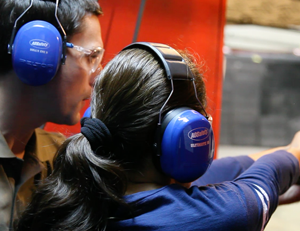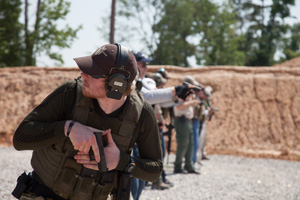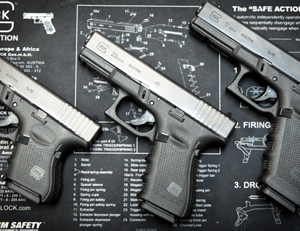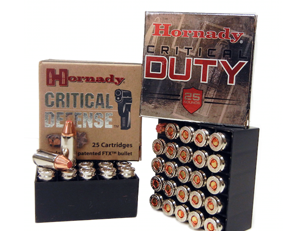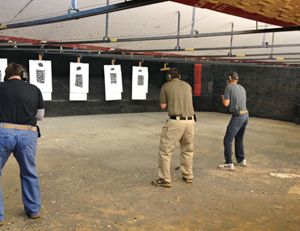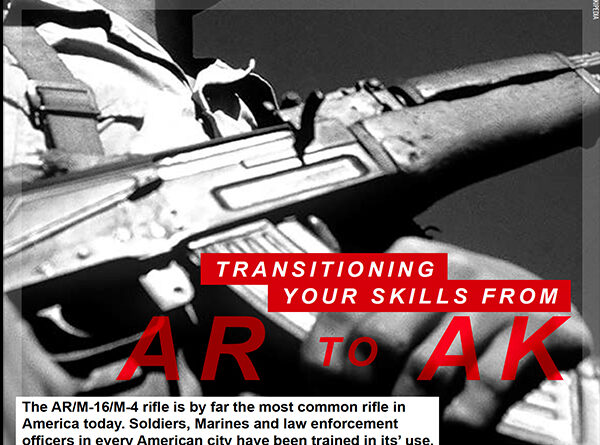
18
TRANSITIONING SKILLS FROM AR TO AK
By Kent O’Donnell, Tactics and Preparedness September 2018
A good AR course can be found within driving distance anywhere in the continental United States. Many AR owners have several variants, different barrel lengths, optics, calibers, and manufacturers. Many AR owners have built or modified their AR to be the perfect weapon for their use. But, while the AR is certainly the most prolific rifle in the United States, the AK is the most prolific weapon in the world. If you are anywhere but the United States and have to pick up a battlefield discard, you most likely will find yourself holding an AK. So, if you have built, rebuilt, added and deleted to your AR too many times and are looking for your next worthy project, the AK rifles are calling.
Like changing from a double or single action pistol with a thumb de-cock and thumb safety, going from an AR to AK requires some training and practice. First, you must know the differences in operation, then you must be able to conform to the needs of the system in hand instantly and consistently. There are enough differences between the AR and AK to suggest training is in order.
The most common AK you are likely to come across is the AKM, often referred to as the AK Modern. It is stamped sheet metal and supported by pins and rivets. The AKM fires the 7.62×39 mm round. The 7.62×39 round usually can be found in 123-grain bullets vs. the 5.56×45 that is found in 55 to 77-grain bullets. The 7.62×39 has better penetration through barriers as well. Think windows, walls, and soft skin (un-armored) vehicles. With the larger bullet weight there is an increase in felt recoil, but not so much that it becomes a hindrance to shoot or to shoot multiple rounds fast. The loaded AK is only slightly heavier than your loaded AR. The type of wood or synthetic stock and the heavier rounds largely account for the difference in weight. The AR action may be gas piston or direct impingement, while the AK is a long piston.
Operating the AK requires some new skills. Loading the AK, the magazine has two locking lugs. Many shooters prefer the metal magazines because of initial poor performance from plastic magazines. The current production lines of plastic magazines seem to be holding up well though. To load, you will insert the lug on the front of the magazine into the weapon first then rotate the rear lug or tab into place. You should hear a crisp click when the magazine pivots into place and locks. This is a distinct difference in operation from the AR where magazines are inserted and released straight in and out. To remove the AK magazine, you must press the release tab forward and rotate the magazine out.
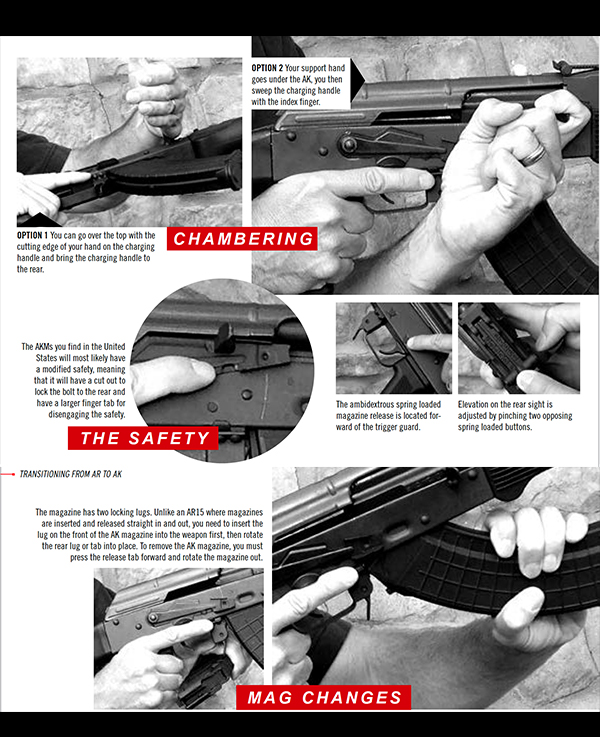
Another difference you must train for the AK is the safety. Although there have been several improvements or modification on AKs sold in the United States, the standard safety requires some practice. The safety is located on the right side of the receiver. When in the “safe” position the charging handle and bolt cannot go to the rear and the trigger cannot be pressed. The AKMs you find in the United States will most likely have a modified safety, meaning that it will have a cut out to lock the bolt to the rear and have a larger finger tab for disengaging the safety. In other nations, the safety usually does not have the bolt hold open cut out and the finger tab is very small and difficult to work with. The proper ready weapon would be to have a loaded magazine inserted, round in the chamber and weapon on Safe. You then “patrol” with your fingers staged on the safety. When needed, you will sweep the safety down, attain a firing grip and go to work. I have found many AKs in other nations to have fully loaded magazines inserted, safety off, bolt forward on an empty chamber. This requires the operator to quickly chamber a round before firing. Another thing that I have found to be common in other nations is to decorate the AK. I have seen streamers from the barrels, even using machine gun links attached to the barrels holding rounds that will not fire in the AK. When asked through an interpreter, the soldier stated it looks better with the attachments.
Chambering a round in the AK is yet another different manual of arms, and can be done several ways. Once the magazine is inserted, with the weapon in your workspace, you can go over the top with the cutting edge of your hand on the charging handle and bring the charging handle to the rear. This will cause your hand to drag across the tab of the safety and other parts. This is where the AK gets the nickname, “cheese grater” and why you will see many AK shooters wearing gloves.
The other option is to rotate the AK to the right, place your left hand (for right-handers) under the AK and hook the charging handle with your first finger. Rack it to the rear and release, chambering a round. Again, your hand will be dragged across the finger tab of the safety, and after a full day of shooting, you will experience the cheese grater effect.
The last big difference is in magazine exchanges. Rather than a magazine release button on the side of the magazine well, the AK uses a spring-loaded magazine catch at the back of the magazine. It is possible to use a loaded magazine to strip the empty magazine out, but I like to press the catch forward with my thumb and then continue forward and strip the magazine out of the weapon. I suggest this method because I believe it is more reliable than the magazine to magazine method. A third method that is also fast and reliable calls for removing the empty magazine with your support hand prior to attaining the new magazine. In this method, when you get the empty gun “click”, you bring your support hand to the magazine catch, press it and the magazine out of the weapon, retrieve the loaded magazine, insert, charge and shoot. This method is reliable, can be done on the move, and usually done without errors.
A good place to start your AK training is with a shot timer. This will give you hard numbers for what method you can do faster and also test your ability to consistently complete the task. Some useful training can be done in limited space.
These drills can be conducted at the 25-yard line:
SNAPS
Start with a loaded AK (one round in the chamber, and a loaded magazine), weapon held at the PRS (Protective Rings of Security) ready (muzzle depressed), fingers staged on the safety (that is on). Ideally, the thumb should still be around the pistol grip. On the shot-timer’s beep, sweep the safety down to fire and fire three rounds. Try using one finger and using two fingers on the safety lever. You want to work toward four seconds or less with no operator errors using the safety. The drill can be made more challenging with smaller targets or faster par times.
CHARGING THE AK
There are two main methods. During the following drills, you should try each method to see what works best for you. The goal is a method that will work as near to 100 percent of the time as possible, even while moving or in unconventional positions.
Method one: the weapon in your workspace, muzzle up, after the loaded magazine is inserted; rotate the weapon so the charging handle is up toward the sky. Bring your support hand over the top and use the cutting edge, or pinky side of your hand to pull the charging handle to the rear, letting the spring take it forward. It is good to wear gloves to avoid ripping up your hand on the safety and various edges of the AK.
Method two: the weapon in your workspace, muzzle up, after the loaded magazine is inserted; your support hand goes under the AK, you then sweep the charging handle with the index finger, again letting the spring take the bolt forward.
MAGAZINE CHANGES
Using the magazine: With a magazine of one round, load and make ready. With the safety on, and a magazine of two rounds staged, you will shoot the weapon to empty (one round) then conduct a speed reload. The AK does not lock to the rear on an empty magazine as ARs do and it will require you to charge the weapon after you insert the new magazine. Shoot the one round. With your support hand, locate the magazine loaded with two rounds, attain a beer can type grip as with your AR magazine, bring the loaded magazine up, use it to press the magazine release and strip the empty magazine in one swift motion, and rock it into place. Charge the weapon and fire two rounds. Removing the empty magazine then loading: With a magazine of one round, load and make ready. With the safety on, and a magazine of two rounds staged, you will shoot the weapon to empty (one round) then conduct a speed reload. In this drill, as your support hand comes off the weapon, it finds the magazine catch, presses it and removes the magazine, and then acquires and reloads the new magazine, charging the weapon and shooting two rounds.
You can run the AK through standard AR drills after you have the safety and reloading mastered. One common error I see is that AR shooters who are used to bracing the fore-end of (free floated) ARs on an object will brace the AK barrel. I do not encourage the barrel touching supports when shooting as this can foul the harmonics of the barrel and be detrimental to the accuracy. Placing the magazine on the deck, when shooting prone, can improve accuracy. With modern magazines, I have not had a malfunction induced by this technique. Test your reloading of the AK by loading the magazine to go dry while in any position. Test your skills and find what works fastest and most reliably for you.
Many Americans are well trained and experienced with AR type rifles. Given that the AK family of rifles are the most common firearms on the planet, wouldn’t it make sense to have a similar level of experience with these too? Enjoy some safe and productive training.
This article originally appeared in Tactics and Preparedness, Download a PDF Version of this article.
BIO
Kent O’Donnell is a former Recon Marine and a retired police sergeant. He spent most of his career on his department’s SWAT team. Kent has done risk and security audits and training throughout West Africa, South America and Europe and provided weapons and tactics training around the world. Kent worked on a U.S. government project in Libya for six months and currently serves http://www.360worldwidesecurity.com.

18
TRANSITIONING SKILLS FROM AR TO AK
By Kent O’Donnell, Tactics and Preparedness September 2018
A good AR course can be found within driving distance anywhere in the continental United States. Many AR owners have several variants, different barrel lengths, optics, calibers, and manufacturers. Many AR owners have built or modified their AR to be the perfect weapon for their use. But, while the AR is certainly the most prolific rifle in the United States, the AK is the most prolific weapon in the world. If you are anywhere but the United States and have to pick up a battlefield discard, you most likely will find yourself holding an AK. So, if you have built, rebuilt, added and deleted to your AR too many times and are looking for your next worthy project, the AK rifles are calling.
Like changing from a double or single action pistol with a thumb de-cock and thumb safety, going from an AR to AK requires some training and practice. First, you must know the differences in operation, then you must be able to conform to the needs of the system in hand instantly and consistently. There are enough differences between the AR and AK to suggest training is in order.
The most common AK you are likely to come across is the AKM, often referred to as the AK Modern. It is stamped sheet metal and supported by pins and rivets. The AKM fires the 7.62×39 mm round. The 7.62×39 round usually can be found in 123-grain bullets vs. the 5.56×45 that is found in 55 to 77-grain bullets. The 7.62×39 has better penetration through barriers as well. Think windows, walls, and soft skin (un-armored) vehicles. With the larger bullet weight there is an increase in felt recoil, but not so much that it becomes a hindrance to shoot or to shoot multiple rounds fast. The loaded AK is only slightly heavier than your loaded AR. The type of wood or synthetic stock and the heavier rounds largely account for the difference in weight. The AR action may be gas piston or direct impingement, while the AK is a long piston.
Operating the AK requires some new skills. Loading the AK, the magazine has two locking lugs. Many shooters prefer the metal magazines because of initial poor performance from plastic magazines. The current production lines of plastic magazines seem to be holding up well though. To load, you will insert the lug on the front of the magazine into the weapon first then rotate the rear lug or tab into place. You should hear a crisp click when the magazine pivots into place and locks. This is a distinct difference in operation from the AR where magazines are inserted and released straight in and out. To remove the AK magazine, you must press the release tab forward and rotate the magazine out.

Another difference you must train for the AK is the safety. Although there have been several improvements or modification on AKs sold in the United States, the standard safety requires some practice. The safety is located on the right side of the receiver. When in the “safe” position the charging handle and bolt cannot go to the rear and the trigger cannot be pressed. The AKMs you find in the United States will most likely have a modified safety, meaning that it will have a cut out to lock the bolt to the rear and have a larger finger tab for disengaging the safety. In other nations, the safety usually does not have the bolt hold open cut out and the finger tab is very small and difficult to work with. The proper ready weapon would be to have a loaded magazine inserted, round in the chamber and weapon on Safe. You then “patrol” with your fingers staged on the safety. When needed, you will sweep the safety down, attain a firing grip and go to work. I have found many AKs in other nations to have fully loaded magazines inserted, safety off, bolt forward on an empty chamber. This requires the operator to quickly chamber a round before firing. Another thing that I have found to be common in other nations is to decorate the AK. I have seen streamers from the barrels, even using machine gun links attached to the barrels holding rounds that will not fire in the AK. When asked through an interpreter, the soldier stated it looks better with the attachments.
Chambering a round in the AK is yet another different manual of arms, and can be done several ways. Once the magazine is inserted, with the weapon in your workspace, you can go over the top with the cutting edge of your hand on the charging handle and bring the charging handle to the rear. This will cause your hand to drag across the tab of the safety and other parts. This is where the AK gets the nickname, “cheese grater” and why you will see many AK shooters wearing gloves.
The other option is to rotate the AK to the right, place your left hand (for right-handers) under the AK and hook the charging handle with your first finger. Rack it to the rear and release, chambering a round. Again, your hand will be dragged across the finger tab of the safety, and after a full day of shooting, you will experience the cheese grater effect.
The last big difference is in magazine exchanges. Rather than a magazine release button on the side of the magazine well, the AK uses a spring-loaded magazine catch at the back of the magazine. It is possible to use a loaded magazine to strip the empty magazine out, but I like to press the catch forward with my thumb and then continue forward and strip the magazine out of the weapon. I suggest this method because I believe it is more reliable than the magazine to magazine method. A third method that is also fast and reliable calls for removing the empty magazine with your support hand prior to attaining the new magazine. In this method, when you get the empty gun “click”, you bring your support hand to the magazine catch, press it and the magazine out of the weapon, retrieve the loaded magazine, insert, charge and shoot. This method is reliable, can be done on the move, and usually done without errors.
A good place to start your AK training is with a shot timer. This will give you hard numbers for what method you can do faster and also test your ability to consistently complete the task. Some useful training can be done in limited space.
These drills can be conducted at the 25-yard line:
SNAPS
Start with a loaded AK (one round in the chamber, and a loaded magazine), weapon held at the PRS (Protective Rings of Security) ready (muzzle depressed), fingers staged on the safety (that is on). Ideally, the thumb should still be around the pistol grip. On the shot-timer’s beep, sweep the safety down to fire and fire three rounds. Try using one finger and using two fingers on the safety lever. You want to work toward four seconds or less with no operator errors using the safety. The drill can be made more challenging with smaller targets or faster par times.
CHARGING THE AK
There are two main methods. During the following drills, you should try each method to see what works best for you. The goal is a method that will work as near to 100 percent of the time as possible, even while moving or in unconventional positions.
Method one: the weapon in your workspace, muzzle up, after the loaded magazine is inserted; rotate the weapon so the charging handle is up toward the sky. Bring your support hand over the top and use the cutting edge, or pinky side of your hand to pull the charging handle to the rear, letting the spring take it forward. It is good to wear gloves to avoid ripping up your hand on the safety and various edges of the AK.
Method two: the weapon in your workspace, muzzle up, after the loaded magazine is inserted; your support hand goes under the AK, you then sweep the charging handle with the index finger, again letting the spring take the bolt forward.
MAGAZINE CHANGES
Using the magazine: With a magazine of one round, load and make ready. With the safety on, and a magazine of two rounds staged, you will shoot the weapon to empty (one round) then conduct a speed reload. The AK does not lock to the rear on an empty magazine as ARs do and it will require you to charge the weapon after you insert the new magazine. Shoot the one round. With your support hand, locate the magazine loaded with two rounds, attain a beer can type grip as with your AR magazine, bring the loaded magazine up, use it to press the magazine release and strip the empty magazine in one swift motion, and rock it into place. Charge the weapon and fire two rounds. Removing the empty magazine then loading: With a magazine of one round, load and make ready. With the safety on, and a magazine of two rounds staged, you will shoot the weapon to empty (one round) then conduct a speed reload. In this drill, as your support hand comes off the weapon, it finds the magazine catch, presses it and removes the magazine, and then acquires and reloads the new magazine, charging the weapon and shooting two rounds.
You can run the AK through standard AR drills after you have the safety and reloading mastered. One common error I see is that AR shooters who are used to bracing the fore-end of (free floated) ARs on an object will brace the AK barrel. I do not encourage the barrel touching supports when shooting as this can foul the harmonics of the barrel and be detrimental to the accuracy. Placing the magazine on the deck, when shooting prone, can improve accuracy. With modern magazines, I have not had a malfunction induced by this technique. Test your reloading of the AK by loading the magazine to go dry while in any position. Test your skills and find what works fastest and most reliably for you.
Many Americans are well trained and experienced with AR type rifles. Given that the AK family of rifles are the most common firearms on the planet, wouldn’t it make sense to have a similar level of experience with these too? Enjoy some safe and productive training.
This article originally appeared in Tactics and Preparedness, Download a PDF Version of this article.
BIO
Kent O’Donnell is a former Recon Marine and a retired police sergeant. He spent most of his career on his department’s SWAT team. Kent has done risk and security audits and training throughout West Africa, South America and Europe and provided weapons and tactics training around the world. Kent worked on a U.S. government project in Libya for six months and currently serves http://www.360worldwidesecurity.com.

